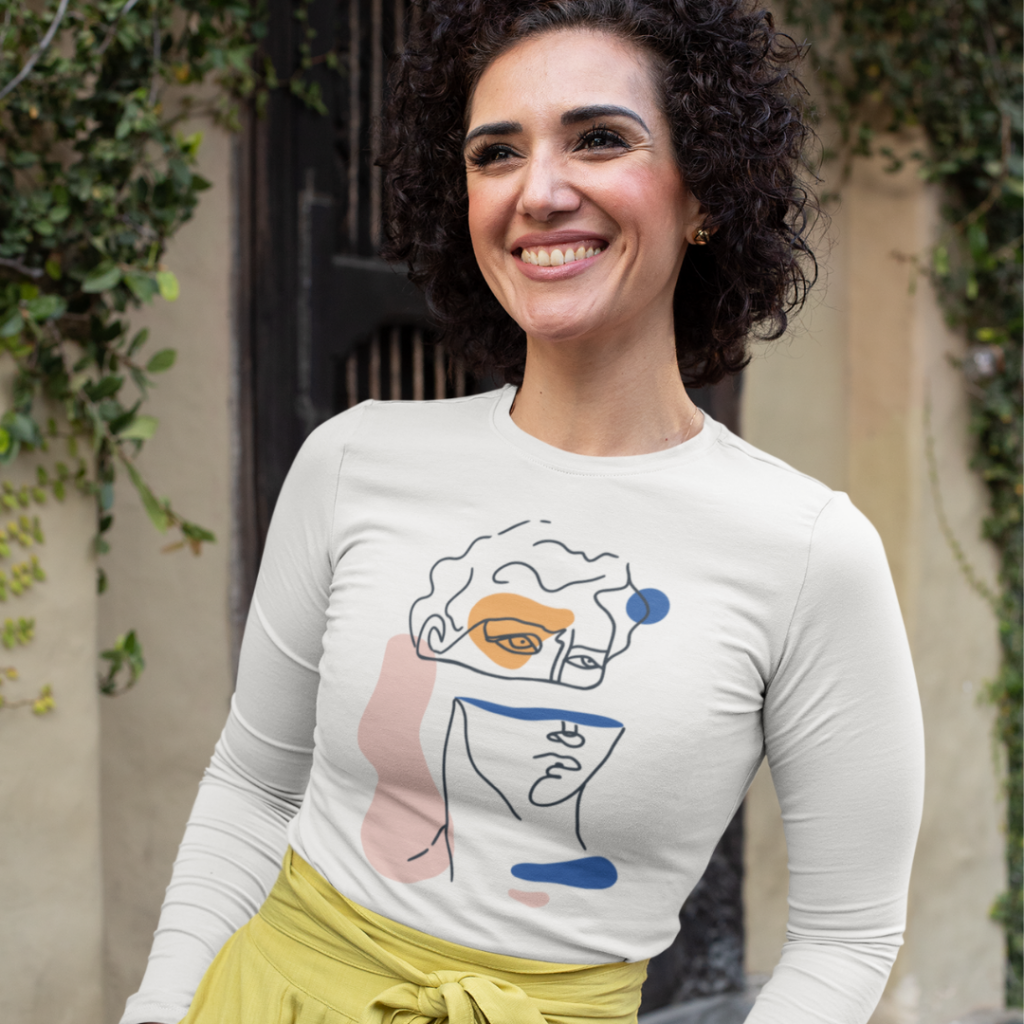Did your hear about dropshipping and print ond demand?
No? – if not you have to read this article which helps you to learn more about those toppics!
Drop shipping and print on demand have a lot in common. They’re both e-commerce business models, neither requires you to hold or manage inventory and each is a great option for newly beginning entrepreneurs.
About dropshipping
Why dropshipping? A business model which works without any inventory or investment. There are tree parties involved: a dropshipping company, a seller and buyer. The seller runs an online shop, where the end-customer can order products. When a order is placed, the seller buys this product from the dropshipping company which produces the product and delivers it to the end-customer under the sellers brand or name.
Most businesses have to use a lot of money for the investment in space and inventory, but with dropshipping you are saving on that cost. You can start without any costs or inventory. You will be able to afford a wider range of products and services since they will be outsourced from a dropshipping company that already makes them. The risk level is minimal to zero.
Who is dropshipping for? The dropshipping model is ideal small shops who are starting out and have a little capital. Also do not have enough space for producing there produkts or dosen’t want to take to risk of investing in the wrong project. This method gives you the freedom to experiment more, but keep in mind that it also means smaller profit margins and giving up some control over the product quality and the entire fulfillment process.
Positive about dropshipping
- Your brand still stands out. You sell your brand.
Usually the end-customer receives a while label package without any association to the dropshipping company. Every order will look like it was shipped directly from you. - No stress about inventory. You don’t have such a thing as inventory.
You don’t purchase the products in bulk and worry about them not getting sold. You directly focus on expanding your business by soliciting your store and products. - Low budget for business. Since you pay for products only when a customer orders something, you don’t store inventory beforehand and you’re not risking much if the product doesn’t find a ready market.
- Low risk involved. The seller doesn’t buy the productes beforehand, in fact, he only pays for the products when he gets an order from his online store. This is such a safe and secured system where the seller is in no way at risk.
- Many products and varieties. You can try out the newest trends which are up to date without taking a risk. The seller just adds the product to his store soriment and if it dosen’t sell, he removes it regardless of paying attention of losing money.
- More time to focus on your store. You don’t have to worry about maintaining stock, packaging and shipping orders, communicating with suppliers, etc. – a team of specialists got your back!
Negative about dropshipping
- Lack of control. In dropshipping businesses, all the importent tasks are taken care of by some third person, dropshipping suppliers. You can only trust them but can’t exercise any control over their activities.
- Little profit margin. Every order has two transactions – your customer buys the product from your store, which you order at the dropshipper. The difference between your retail price and the price that the dropshipper has set, will be your profit. If you could sell your own inventory, you could keep all of the money your customer would pay.
- There’s more competition. If you’re using a dropshipper to sell a product, it means you are not the only one who sells it. There are others who are selling the exact same product purchased from the same dropshipper. This means you’ll need to find your unique designs and marketing strategy for the selling your products.
- Difficult to establish your brand. Most dropshippers will often offer you different ways to promote your brand, but you might want a little more. For example, you might want to use branding for custom packing or adding promotional items to your orders.
Depending on the dropshipper, your choice in this area may be limited – so pick your dropshipper wisely.
Understanding print on demand
Why print on demand (POD)? Print on Demand is when the designs are printed only when a customer buys something in your store. Just like dropshipping, POD means that you don’t need to buy huge inventory when you get started – each order is printed as it comes in.
Who is POD for? POD, just like drop shipping, is ideal for stores starting out and dosen’t have a big capital.
It’s also great if you want to grow your business and test new products. But keep in mind that the POD model means that order fulfillment takes longer – it’s something you don’t have to worry about if you have a stock of already printed products at your disposal.
Positive about print on demand
- You can experiment with different designs: You can try out new designs without taking any risk – you can come up with something more unusual and see if your customers likes it.
Since products are printed on demand, you’re not making a huge investment on a thing that might not sell in the end. If a design dosen’t sell as good as you might like, you can easily remove it from your shop. - Customization: When your customers are able to get exactly what they want, they appreciate you.
If you are able to personalize the product – the buyer is more likely to buy it. - You don’t need to buy printers yourself. Your POD partner takes care of all the technical parts by printing your stuff – no need of spending money in expensive equipment. And you don’t need to learn how to print a product either.
- Saving space and environment friendly: When you aren’t keeping a bulk stock, you won’t be needing a storage space.
- No loss is arised: Even though the profit is less, you can make sure that you don’t bring upon yourself a huge loss.
Negative about print on demand
- Your are lost without your printing partner: POD companies work with different suppliers to source products. This means there are a lot of moving parts, and sometimes products may go out of stock or become unavailable – with means your are also out of stock.
- Less control: If you are bound on a third party to fulfill the printing demand, you will be helpless when there is more demand and not enough inventory of raw products.
- Time consuming: Customers absolutely love when they order is fast deliverd. Timing is a very important aspect of this business and delays are looked down upon terribly. Since you are printing on demand it will take a while before your end-customer gets his product.
- Return policy: You will be investing a lot of time and money, in the shipment. When there are returns on your product, your return policy framework should be thorough where you should add the situations where you will accept and won’t accept returns.
Understanding Warehousing & Fulfillment
What is warehousing and fulfillment? You keep a stock of your products at a warehouse of a third company who fulfills incoming orders and sends them to your end-customers. Shirtee Cloud also offers this services to our customers along print-on-demand dropshipping. This means that if your store also sells products that are not made by Shirtee Cloud, you can keep the stock at our warehouse and as orders for these items come in, we’ll fulfill them and send them out to your buyers under your name and brand.
Who is warehousing & fulfillment for? It can be a great help for stores that already have an established presence and a steady stream of incoming orders. It can free up valuable time that you can then devote to other parts of your business.
Positive about warehousing & fulfillment
- It’s a space saver. Depending on the product, keeping its stock at your own home or office can take up a lot of space. Storing it at a warehouse can solve this problem for you. It can also actually help you keep a track of your stock levels.
- This can be more cost-effective as your business grows. A warehosuing and fulfillemnt company could be cheaper in the long-term than hiring employees and renting your own warehousing space.
- It’s a huge time saver. A fulfillemnt partner will take care of packing and shipping products for you, so you’ll have more time to spend on other parts of your business, like marketing, customer support etc.
Negative about Warehousing & Fulfillment
- You lose some amount of control. If you keep your stock at your own place, you’re always in control over what happens to it. Make sure you find a warehousing and fulfillment partner that you trust 100% to handle your products with the same care as you would.
- Moving your products around may be a hassle. Although warehousing & fulfillment companies will let you know when you’re about to run out of products, getting your products delivered to their warehouse in time can still be a problem. You have to make sure that the products reach the warehouse safe and and in time.
Now it’s your turn!
This mostly tell you what dropshipping, print on demand, and warehousing and fulfillment is. All about its benefits and disadvantages. Now it’s up to you – take a look at your business idea. Give it careful consideration of what it is that you want to sell? Once you’re certain of your goal, you can start looking into the means of achieving that and finding the right partner that may help you.
Do you have any questions about dropshipping, POD, or W&F? Or maybe you’d like to tell us about your experience with these methods? Feel free to share it all in the comments below! We would love to hear from you.


